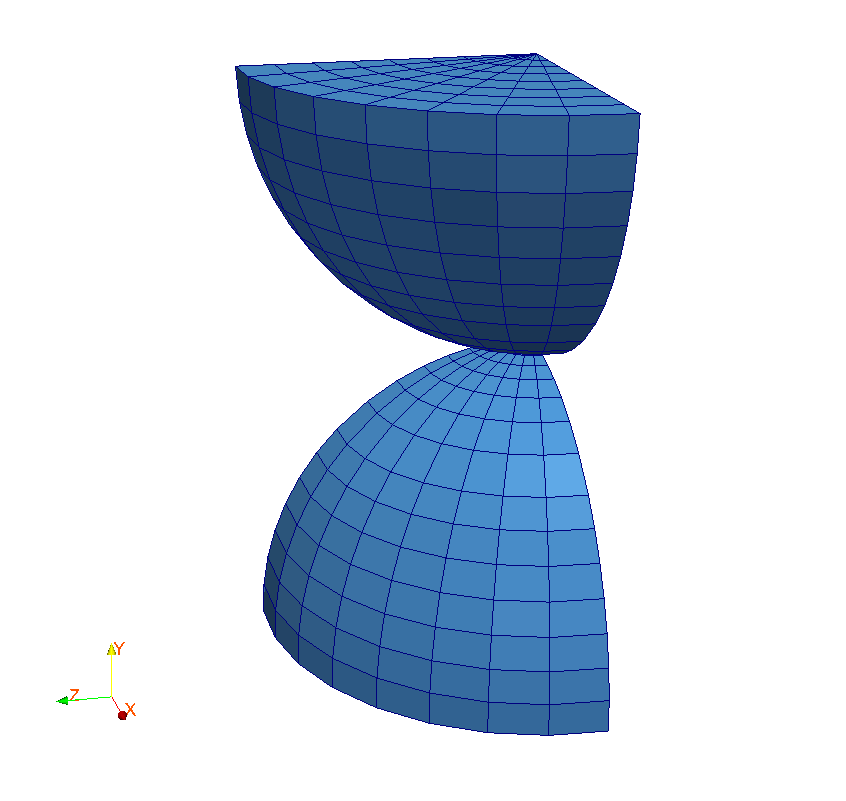11. J modeling#
11.1. Characteristics of modeling#
3D modeling is used. A single calculation with a variant of the contact algorithm by default is performed.
In this modeling, the points \(H\) and \({H}_{p}\) (respectively \(I\) and \({I}_{p}\)) are the same points (compared to those described in the geometry) but located on the two faces supporting the symmetry conditions.
11.2. Characteristics of the mesh#

Knots: 3698.
Meshes: 192 TETRA4, 5872 PENTA6, 224 PYRAM5.
11.3. Tested sizes and results#
First calculation (algorithm “GCP”)
11.4. notes#
The results obtained in this three-dimensional modeling are in very good agreement with the analytical solution as well as the reference (modeling A). It is also noted that the radiating mesh makes it possible to maintain the axisymmetry of the problem, which is why the results obtained in each mesh that contributes to point \(G\) are similar.
The results differ from those obtained by modeling I not because of the contact resolution algorithm but because the geometric convergence criterion is not the same (5% in modeling I, 1% in modeling J).